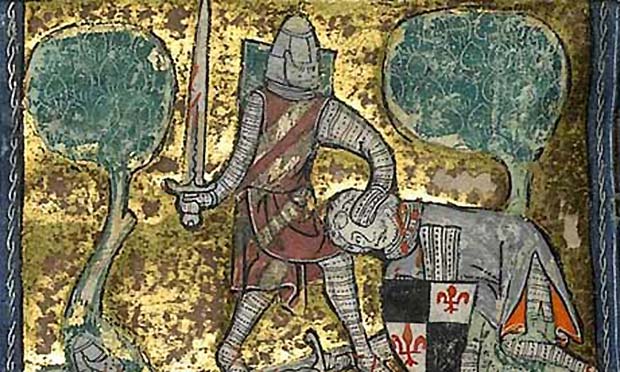Everyone is familiar with Lincoln Castle, the mighty fortification of the city, built by orders of William the Conqueror and standing proudly and securely uphill. Few, however, know of the second, lost castle of the city, which protected the south walls for some seventy years: Thorngate Castle.
A few weeks ago, I wrote a column concerning the Battles of Lincoln and how pivotal a role the city played in the political scene of English medieval history. After the article was published, a reader, Phil Gresham, contacted The Lincolnite noting that he had come across evidence for a second castle in Lincoln, the ‘Castellum de Torngate’ (Thorngate Castle) and asking if I could provide any new insight to the great information he had amassed. What was this supposed second castle and what do we know of its short history?
The origins of the castle on Thorngate are obscure. The first real evidence of the castle at Thorngate appears in the title of one Robert de Cundy (or de Condet) who was ‘Lord of Thorngate Castle’ as well as Lord of South Carlton, Eagle and Skellingthorpe, and Thurlby, as well as of several other locations in Kent and Nottinghamshire. The birth date for Robert is up for debate, with dates ranging from 1096 to 1108. He is, however, listed as being born within the castle, so the construction date must therefore be before 1100 A.D.

The site of the former Thorngate Castle, Lincoln’s second castle, is believed to be at the corner of Waterside North and Broadgate. Photo: Steve Smailes for The Lincolnite
The pre-1100 construction of the castle seems to point towards a late 1080s building of the fortification. The exact date, however, is difficult, if not impossible, to fix. The reasons for this are the hectic and ever-changing political and security situation of ‘The Anarchy’ (scores of castles and defensive works were built in the period), as well as the poor keeping of records prior to the reign of Henry II and his successor Richard I (the Lion-heart). During his reign, King Henry II ordered the destruction of over 1,150 castles in his realm. Despite the demolition of this staggering number of fortifications, by the end of Henry’s rule there appear to be more castles in existence than before he took the throne. This seemingly paradoxical fact can be traced back to the poor, or even non-recording of castles during the reigns of the previous several monarchs after William the Conqueror.
What little information we do have about Thorngate Castle can be of some help to trace the lifespan of the structure. It is attested to in 1141, when Alice de Cundy, Thomas’ now widow (he had died earlier in 1141) pledged the castle, along with her estates in Lincolnshire, Nottinghamshire and Kent to the cause of King Stephen. With the known destruction of the castle by King Stephen in 1151, this seems to point to the castle remaining within the hands of the de Cundy family for its entire existence. Why though, was the castle destroyed?
The destruction of the castle was pledged to the Earl of Chester, Ranulf de Gurnon. The Earl had opposed Stephen at the battle of Lincoln in 1141 but had switched allegiance to the king in 1144 in order to wage war with the Empress Matilda’s ally, the King of Scotland, over a land dispute. He revolted against the king again, however, in 1146 and tried to seize Lincoln (unsuccessfully) in 1149 under the guise of supporting Matilda’s son, the Prince Henry. It appears as a result of an attempted peace brokering between Stephen and the Earl of Chester, the Thorngate Castle was used as a bargaining chip and its destruction ordered.
The site of the castle today appears to be located around the corner of Waterside North and Broadgate (many thanks to Phil for this information), and as it was a wooden structure; most likely nothing remains of it under the present building’s foundations. Even though the castle has long since disappeared from sight, it brings a sense of wonder when passing the Waterside area of what the city could have looked like had Lincoln kept its second castle.







